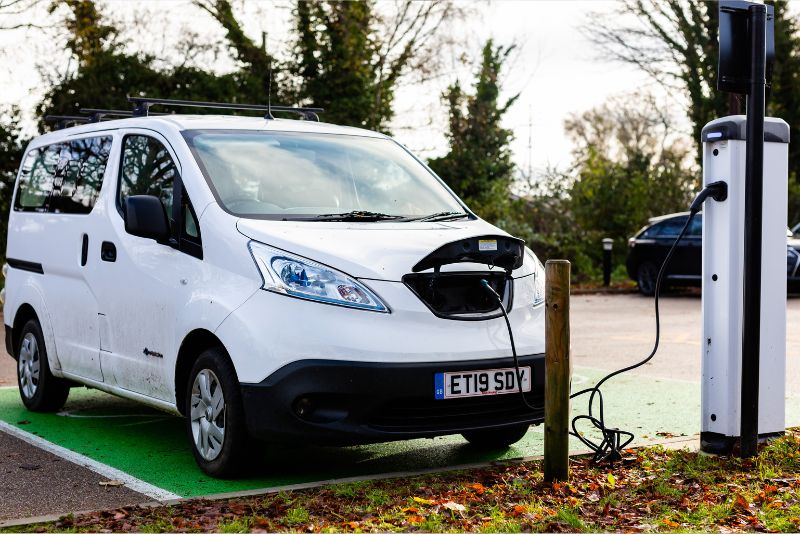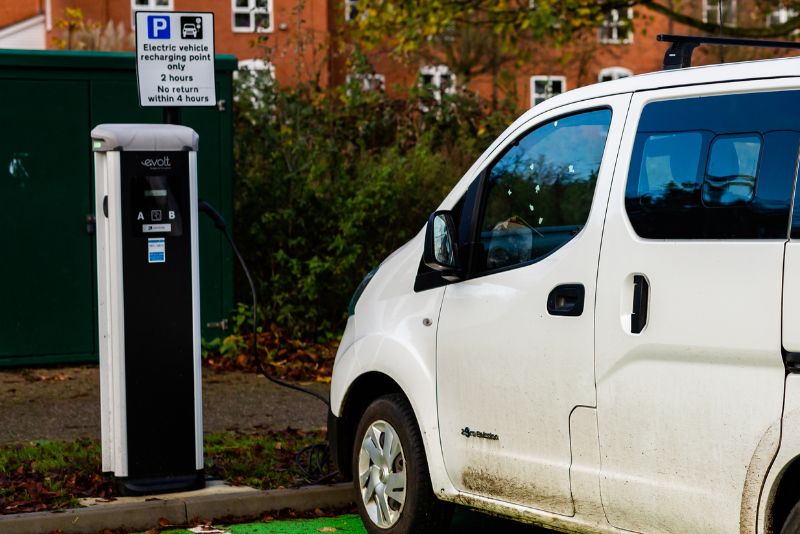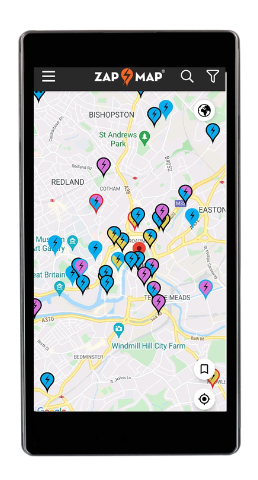Mind the van gap!

Van drivers are big spenders at the gas pumps, and that spend has now increased to record highs. It’s a difficult time, particularly for those who are sole-traders or self-employed, without the luxury of a head office picking up the tab for the increasingly costly fuel refills, or investing in a fleet with the latest in electric tech.
According to the RAC, petrol prices saw the biggest daily jump in 17 years in June. While many reports talk about the cost per family car, little is in the news about the effect on independent van drivers who have no option but to use their vehicle for business and bear the brunt of the costs.
It’s disappointing that the news rarely focuses on the difficulties faced by the trade.
Average UK car mileage is 12,000 per year, while those using vans for ‘Social, Domestic and Pleasure’ or purely for leisure averages a modest 8,000 miles per year. However, those driving the ‘work horse’ van are looking at 15,000 to 20,000 miles a year. And if you use your van as a courier, like many of the Amazon delivery type businesses, you’re likely to be covering 40,000 miles and over each year.
In parallel to the fuel and energy crisis, ambitious targets have been set for the future of greener energy and alternative fuel sources, with all new petrol and diesel vehicle production to be scrapped by 2030.
We went along to the Commercial Vehicle Show to ascertain exactly where vans fitted in the mix, and what the future looks like.
There is some movement in the van arena, according to Mike Hawes of SMMT, who delivered the talk. More than 20 electric vans options are now on the market, and one in three models are available as electric. Since 2018, one in every 23 vans registered is battery powered, compared to one in every five cars.
However, according to SMMT’s survey, 12% of van owners say they will never adopt an electric vehicle. With more government consultations around the electric vehicle mandate accelerating the changes, how is the average van owner going to meet the challenge (and overcome reluctance)?
Some of the biggest pain points for small business van owners remain:
The price of buying a new electric van
Expense remains a big barrier. While the government continues to roll out grants for electric van purchases, grants are capped at £2,500 for small vans, or £5,000 for large vans. Even with this grant, capital outlay can be difficult. Affordable electric vehicles are not yet on the used market, but could the adoption pick up once used prices drop?
Fuel costs have risen at a frightening rate, and there are no signs that this is likely to reduce. To add to the fueling woes, fuel theft has doubled.
Although the costs of purchasing an electric vehicle could still be prohibitive, it is reasonable to start to consider how escalating fuel prices and limiting your travel could impact your business, versus the costs of moving to electric.
One example quoted by DrivingElectric.com is that a VW e-Transporter would cost around £5 to fully charge its 37.3kWh battery! The downside is that the used price is still around £30,000.
Another element to way up is the expansion of the Clean Air Zones, which could see those without compliant vehicles being charged up to £60 in some areas. It is likely that those working in Clean Air Zones, and the ever-expanding London ULEZ, will move to electric first.
Electric van mileage
According to Mike Hawes of SMMT, most electric vans average 150 miles on single charge, and he estimates that most van drivers cover 100 miles a day on average.
Could you do your day’s work on the 150 miles charge per day?*
A big barrier is the distance an electric van can travel on a single charge. According to SMMT, 65% of drivers surveyed said a longer battery range would make them switch.
So, recharging is still critical for businesses. While we all need to fill up our tanks from time to time, we know we can do this at a local garage, within minutes and get back on the road again. While the number of charge points continue to increase, there simply aren’t enough fast chargers to provide a reliable service, yet.
Electric van charge points
There are three known concerns when it comes to charging your van.
The first is the availability of a national network of charge points.If you do run low, charging will take too long and delay you arriving at your next job on time.Another is that many smaller business owners store their vehicles at home as opposed to at a work premises, so a fast-charging wallbox may need to be installed at home. If you park on a street, this may not be a solution.

While the national network is growing, not all charge points offer fast charging, which can be a deal-breaker for businesses.
However, with the sale of new petrol and diesel vehicles being scrapped by 2030, the Government is currently focusing on rolling out the cables at speed.
Find out more about the UK electric vehicle infrastructure strategy here.
Adapting to electric vehicle technology
Many of us are unfamiliar with the technology involved in owning and running an electric vehicle for the first time.

From knowing what a ‘wallbox’ is versus a domestic socket, to understanding the cost-per-kWh at home, versus the increased costs if you charge at a public charge point, there is a lot to digest and get accustomed to before you even start to drive the vehicle.
It’s important to remember that, if you do take the plunge, purchasing an electric van from a reputable dealer is key. They will have the knowledge to guide you and support you with any queries you may have (you certainly won’t be the only one!).
While you are weighing up the options, you can also start looking at helpful apps, like ‘Zap Map’ (screenshot above) which can help you work out your local charge points to ascertain whether it’s even feasible in your area.
Your business ‘sustainability statement’
Being seen to ‘go green’ could boost your business. While the larger companies are coming up with their environmental statements, smaller businesses may be less likely to consider this as part of their requirements.
However, it could sway some clients to choose a sustainable trader over a non-sustainable one. If you have a customer who is accustomed to living in a clean air zone, for example, this could well be a question that tips the balance as to whether they use your services.
If you have made the switch to electric, or starting to look into it, you may find obtaining the right insurance is proving tricky, with fewer electric van insurers currently on the market. However, we can help. A-Plan works with a reliable panel of electric van providers and we would recommend talking to a member of our knowledgeable business team in the first instance. Find your local team here.
Whether you purchase electric, or stick with diesel or petrol, you may still have some options when it comes to reducing your van insurance premiums – take a look at our latest advice and get in touch.
*some electric vans do cover over 200+ miles per charge, according to Parkers.co.uk.







